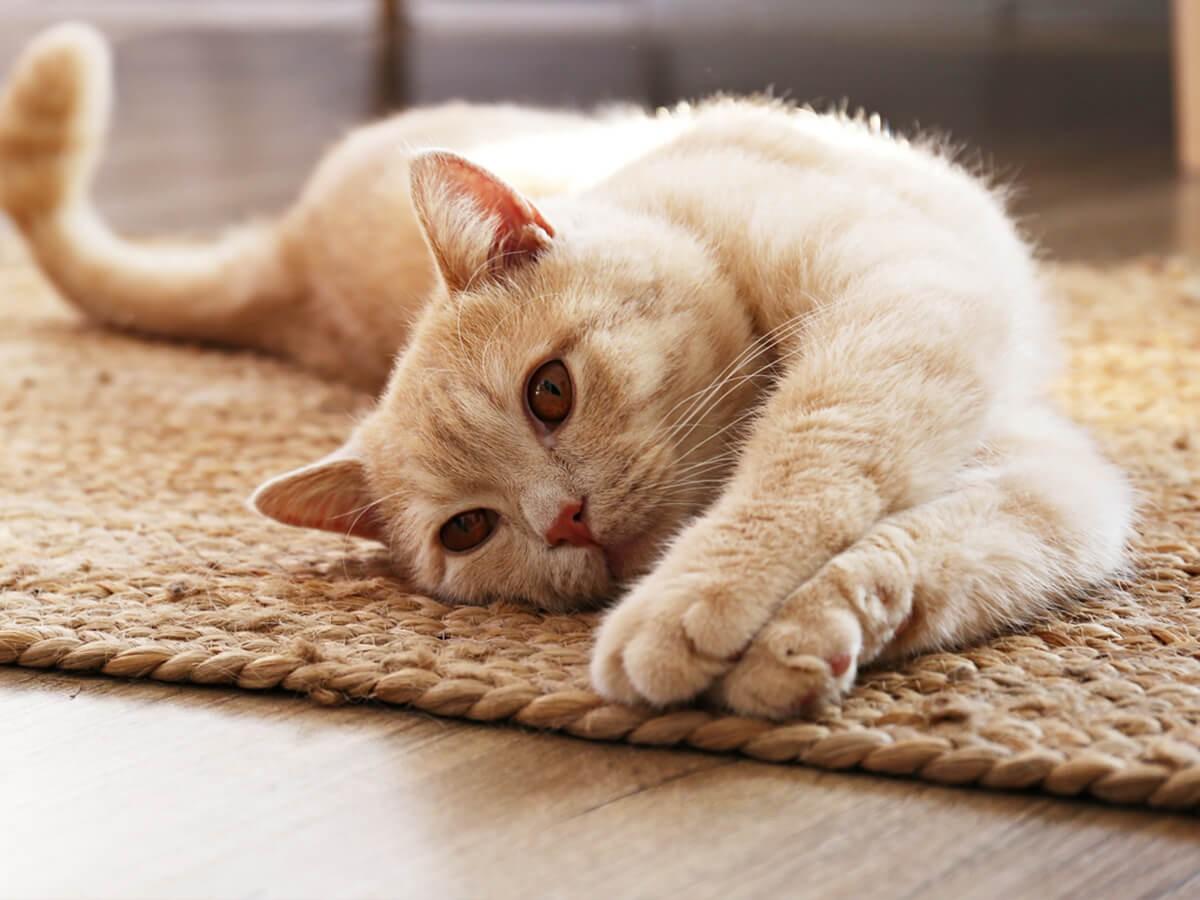Common American Shorthair health issues:
Cat fanciers alike can recognize the beautiful American Shorthair cat, also known as the short-haired tabby cat, immediately with its array of coat patterns and colors, especially when you see the silver tabby or the orange tabby, two of the most popular American shorthair cat colors and patterns.
Your medium-sized, good-natured feline may fit right in with your family and even get along great with your kids. Though your American shorthair loves attention and makes a great house cat (they might occasionally even get along with your next-door neighbor’s super-friendly dog), this diverse breed might encounter a few health problems.
Silver or orange tabby cats have health issues just like every other breed of cat. It’s a good idea to learn more about the breed if you think you might add an American shorthair cat to your family, including American shorthair health risks.
Heart Disease
Heart disease is not only a rampant health problem to humans in the United States, but it may also afflict your cat, too. Your American shorthair tabby cat may suffer from heart muscle disease through an inherited condition or through other diseases that damage the heart.
Hypertrophic cardiomyopathy (HCM) refers to the thickening of the heart muscle and often occurs due to an overactive thyroid gland.
Dilated cardiomyopathy (DCM) results due to a deficiency of the amino acid taurine, found in food. (Most cat food brands today add taurine to foods.)
Check for rapid breathing, lethargy, and a poor appetite to signal heart disease. To get a specific diagnosis, your veterinarian must use advanced medical imaging on your American shorthair cat. Have your pet evaluated twice a year for heart problems.
Signs and symptoms of heart disease in felines:
Labored, rapid breathing
Lethargy
Poor appetite
Weight changes
Feline Lower Urinary Tract Diseases
Urinating outside the litter box may signal improper nerve function from a spinal defect, called Feline Lower Urinary Tract Diseases (FLUTD).
Any signs of urination outside the litter box (such as on cool surfaces), blood in the urine, little urine production when trying to urinate or crying in the litterbox can indicate FLUTD. Your American shorthair’s inability to urinate can quickly become fatal, so get your cat to your veterinarian as soon as possible.
At every checkup, your veterinarian should always check for signs of kidney disease, infection, urine crystals and diabetes, and if needed, through X-rays and ultrasounds. Severe FLUTD cases may require surgery.
Symptoms of urinary tract diseases in cats:
Urinating outside litter box
Bloody urine
frequent urination
Little urine production
Difficulty urinating
Renal Failure
American shorthair cats may suffer from renal failure, which means their kidneys don’t properly cleanse waste from the blood and regulate hydration. Kidney disease happens often in older cats but can happen in younger cats as well.
Make sure your veterinarian screens for kidney problems early and regularly. Severe renal failure can turn fatal, but special diets and medications can help your American shorthair cat if caught early.
Renal failure symptoms in cats:
Weakness
Weight loss
Lack of appetite
Increased thirst
Frequent urination
Hyperthyroidism
Many middle-aged American shorthair cats develop a benign (non-cancerous) tumor in the thyroid gland, causing hyperthyroidism. This causes a lack of control of the hormone called T4 from the thyroid gland – the thyroid pumps out T4 despite signals to stop.
Watch for vomiting, weight loss, and increased thirst because hyperthyroidism can lead to heart failure, kidney failure, and fatal blood clots.
Make sure your vet looks for hyperthyroidism using a blood test during checkups. Treatment can cure the disease and help your American shorthair cat lead a normal life.
Symptoms of feline hyperthyroidism:
Vomiting
Weight loss
Increased thirst
Diarrhea
Hyperactivity
Diabetes Mellitus
Your American shorthair has a genetic predisposition to diabetes mellitus, a genetic disease that can occur in any cat breed. Diabetes most often occurs if you allow your cat to become overweight or eat a poor diet.
If you have an indoor cat, keep your American shorthair active to prevent weight gain. How much should a domestic shorthair cat weigh? The average domestic shorthair cat should weigh 8 to 10 pounds (3.6 to 4.5 kg), though some individual variation in American Shorthair Cats may occur.
Diabetes can result in pancreatitis, a disease that leads to damage of the cells in the pancreas that produce insulin.
Look for weight loss despite a healthy appetite, excessive thirst and frequent urination. Ask your vet to test your cat for diabetes as part of your cat’s annual wellness exams. Cats may need regular insulin injections if they lose weight as well as a high-protein, low-carb diet.
Feline diabetes signs and symptoms:
Weight loss
Frequent urination
Increased thirst
Increased appetite
Polycystic Kidney Disease
Defective genes cause polycystic kidney disease (PKD) and American shorthair cats are prone to the disease. Miniscule cysts develop inside the kidneys and the liver, which slowly enlarge over time and destroy the affected organ(s).
Look for weight loss, thirst, vomiting, and poor overall health.
Special diets and medication can slow the progress of end-stage organ failure but there is no cure for PKD. Urine or blood testing can detect organ dysfunction in your American shorthair cat. You can have your cat undergo genetic testing for PKD.
Symptoms of Polycystic Kidney Disease in domestic cats:
Rapid weight loss
Increased thirst
Vomiting
Decrease in overall health
How Long Do Domestic Shorthair Cats Live?
The lifespan of a domestic shorthair cat who lives indoors is 13 to 17-years on average. Some live much shorter lives, while others live well into their 20s. Outdoor cats only live two to five years on average, due to the dangers that these cats face, including predators and traffic.
Cat Insurance For American Shorthair Cats
Your American shorthair cat can be an important member of your family. Whether silver, orange or gray, American shorthair cats can live long lives. You can help ensure your beloved feline receives the right veterinary care so your furry friend can live as healthy as possible!
Consider enrolling your American shorthair cat in a pet insurance policy today. Signing up can set you up to be reimbursed for eligible veterinary bills later on in life if your cat develops an unexpected chronic illness or other condition.
Spot Pet Insurance plans can help you with the costs of eligible veterinary care so you can focus on giving your cat the best life possible.
How Long Do Domestic Shorthair Cats Live?
Domestic Shorthair Cats who live indoors can live 13 to 17 years on average. Some live much shorter lives, while others live well into their 20s. Outdoor cats only live two to five years on average, due to the dangers that these cats face, including predators and traffic.[2]

I've had the privilege of immersing myself in the realm of pet safety. As the owner of an energetic mini golden doodle, I know just how stressful being a pet owner can be. I am dedicated to ensuring our beloved pets enjoy a life brimming with good health.
Vet Street,
The Vet on Fourth












